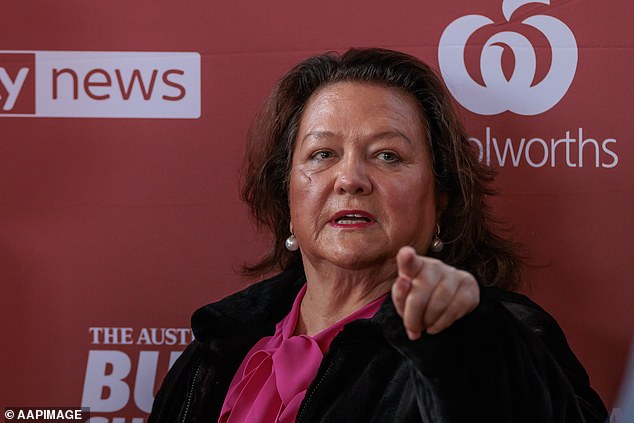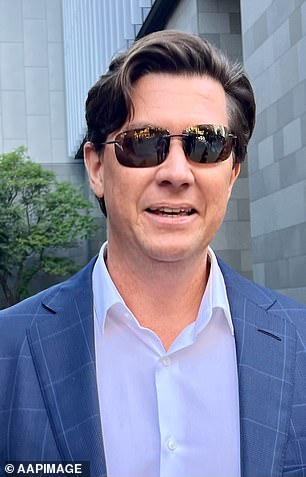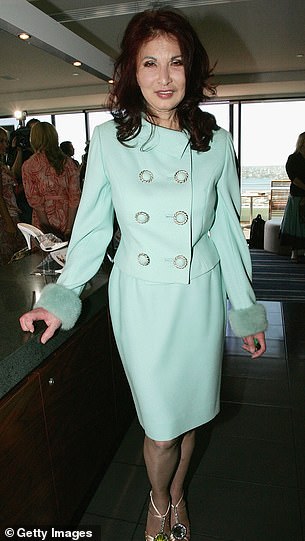Rio Tinto was in the middle of a war between Australian mining dynasties
Rio Tinto is embroiled in a lawsuit that pits billionaires and descendants of Australia's mining pioneers against each other.
Lawyers for the Anglo-Australian company have tried in the state Supreme Court to fend off claims over billions of dollars in iron ore royalties arising from discoveries made as far back as the 1950s and 1960s.
The bitter row centers on the Hope Downs complex in the Pilbara region, four open-cast iron mines jointly owned by Rio's subsidiary Hamersley Iron and Hancock Prospecting since they entered into a partnership in 2005.
Hancock is run and controlled by Australia's richest person, Gina Rinehart. which is estimated to be worth £17.8 billion.
She took over after the death of her father Lang Hancock, a former asbestos miner who laid claim to discovering the world's largest iron ore deposit in 1952 when he noticed the rust-brown color of a gorge while driving across the remote Pilbara region in the northwest flew. Australia.
Joint venture: The Hope Downs complex in the Pilbara region, four open-cast iron mines jointly owned by Rio Tinto's subsidiary Hammersley Iron and Hancock Prospecting
In return for developing and operating the mines, named after Hancock's second wife Hope, Rio Tinto has received half of the royalties since they became operational in 2007.
Now part of Rio's lucrative stake is under threat as the wealthy heirs of those who explored the Pilbara 70 years ago fight for the spoils.
Angela Bennett, Australia's fourth richest woman, claims Rinehart cheated her family business Wright Prospecting out of royalties from the mine.
Wright Prospecting was founded by her father Peter Wright, a school friend of Lang Hancock, who would later help him discover the vast iron ore riches.
It is seeking a 1.25 percent share of royalties from the Hope Downs mines, under an agreement reached with Hancock in the 1980s.
Meanwhile, the wealthy family of another of Hancock's former colleagues, engineer Don Rhodes, is also vying for a 1.25 percent stake, stemming from a deal the two men struck in 1969.
To further complicate matters, Gina Rinehart's estranged eldest children, John Hancock and Bianca Rinehart, are co-defendants in the civil lawsuit, alongside Hancock Prospecting.
They claim their mother stole mining assets from them, meaning the royalties claimed by Wright Prospecting and DFD Rhodes are rightfully theirs.

Fortune: Hancock is run and controlled by Australia's richest person, Gina Rinehart, who is estimated to be worth £17.8 billion
Bianca and John, who are already worth more than £1 billion each from their stake in the family empire, claim assets including Hope Downs were intended to be left to them by their grandfather Lang in a family trust.
When he died in 1992, they claim their mother secretly transferred the assets to Hancock Prospecting, which she then took over.
Gina Rinehart's attorneys claim she was merely righting her father's wrongs.
They claim he confessed on his deathbed
They alleged he unlawfully moved assets from the family business behind her back to help finance his extravagant lifestyle with his new Filipino wife and former maid Rose Porteous, including jewelry and a private jet.


Rift: Rinehart, who is worth an estimated £17.8 billion, is estranged from children Bianca Rinehart and John Hancock
Rinehart despised her stepmother so much that she tried to have her deported, later accusing her of effectively nagging her father to death at the age of 82.
A coronial inquiry later cleared Porteous of murder in 2002.

Legal battle: the Filipina wife of Hancock Prospecting founder Lang Hancock and former maid Rose Porteous
Old letters unearthed during the civil trial revealed that she had branded Porteous, forty years her father's junior, as an “oriental concubine” and a “prostitute” in an attempt to get her hands on the family fortune.
These insults would cause a rift between her and her father, who kicked her off the company's board.
Rio Tinto has been largely a bystander in the epic civil trial, which has occupied Western Australia's largest courtroom since late July and reached a conclusion on Thursday.
A ruling is not expected until next year.
Rio's senior counsel Grant Donaldson convinced the judge to close the court to the public on the final day, arguing that the matters to be discussed were commercially confidential.
Earlier in the trial it emerged that the FTSE 100 company had entered into an agreement in 2005 that will share all liability for any future claims with Hancock Prospecting, but will likely limit the payout if Hancock and Gina Rinehart lose the case.
Rio has declined to discuss the details of the deal but has played down the potential losses. The Hope Downs mines shipped almost 49 million tonnes of iron ore last year.
Rio's half share would have generated a turnover of more than £2.5 billion, based on current iron ore prices.
Analysis carried out for the Sydney Morning Herald newspaper this year suggested Rio and Hancock Prospecting could each be on the hook for £620 million if Wright Prospecting and DFD Rhodes win the case.
This is based on the fact that since Hope Downs first produced iron ore in 2007, they have been granted a 1.25 percent stake, plus interest.
Rio has described the idea that it could be liable for this amount as 'inaccurate'.
A company spokesperson said: 'This liability will only arise if the court ultimately finds that Wright and/or DFD Rhodes are entitled to royalties in the main proceedings.'
Some links in this article may be affiliate links. If you click on it, we may earn a small commission. That helps us fund This Is Money and keep it free to use. We do not write articles to promote products. We do not allow a commercial relationship to compromise our editorial independence.
